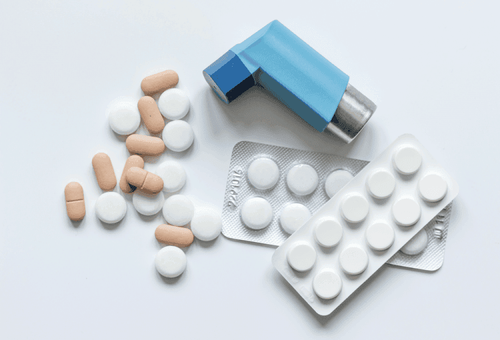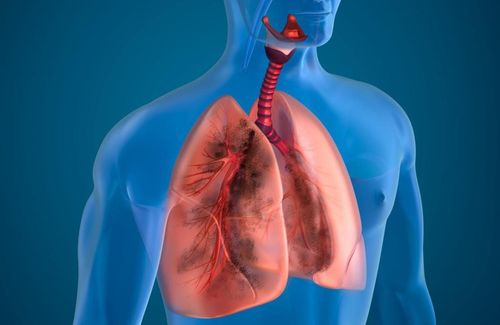This is an automatically translated article.
The article is professionally consulted by Master, Doctor Nguyen Huy Nhat - Department of Medical Examination & Internal Medicine - Vinmec International General Hospital Da Nang.To be able to accurately assess the pathology of the lungs or monitor the patient's response to treatment, doctors can use respiratory function tests. This is one of the methods to use the meter to measure the air flow when the patient inhales and exhales to calculate many important lung function indexes.
1. What is the method of measuring respiratory function?
Pulmonary function measurement, also known as spirometry, is a routine technique in the diagnosis and monitoring of respiratory diseases. When conducting a respiratory function measurement, doctors will use a meter to measure the air flows when inhaling and exhaling to calculate many important pulmonary function indicators. This technique not only helps to record parameters related to lung activity, but also helps to evaluate 2 syndromes of ventilation disorders in patients, namely obstructive and restrictive.Pulmonary function measurement is a fairly simple, easy and non-invasive exploratory technique, so the patient will be painless and has almost no discomfort or complications.

2. Purpose of respiratory function measurement
The results of the respiratory function measurement will be expressed in specific numbers and as a percentage of the value of a normal person. The measured values of respiratory function in the patient will be presented as a curve in which one axis represents tidal flow measurements, the other axis represents volumetric measurements. gas in the lungs.The purpose of spirometry is to obtain accurate information about the air flow in the bronchi and lungs in the patient, and to help assess the degree of obstruction and severity of bronchiectasis. follicle.
In addition, measuring respiratory function also aims to accurately assess the pathology of the lungs or monitor the patient's effective response to treatment.
3. Who should measure respiratory function?
Pulmonary function measurement is one of the routine techniques often indicated in the following cases:Patient has clinical symptoms and abnormal test results in the respiratory system; Patients have symptoms of wheezing, shortness of breath, difficulty in exhaling, prolonged dry cough, cough with sputum, chest deformity; Smokers ; People working in dusty and toxic chemical environments; In addition, measure respiratory function in the case of monitoring, evaluation, and response to treatment in patients with bronchial asthma, restrictive lung disease or chronic obstructive pulmonary disease.
4. Procedure for measuring respiratory function
Measuring respiratory function is a simple technique, so the patient does not need to prepare anything. However, it is necessary to ensure some of the following requirements:Wear loose-fitting clothes when measuring; Before measuring, do not smoke; For about 4 hours before the measurement, do not drink alcohol; Within 30 minutes before the measurement, do not exercise heavily; Do not eat for 2 hours before the measurement; In the case of patients taking spirometry for the first time to diagnose the disease, bronchodilators should not be used. The procedure for measuring respiratory function will go through the following steps:
Step 1: The patient inhales and exhales normally and then continues to inhale deeply and then exhale as hard as possible.

During the measurement, the technician may pinch the patient's nose with a soft nose clip to make sure the patient is not exhaling through the nose.
The spirometer measures the volume and flow rate of air that the patient inhales and exhales, the machine parameters include:
Forced expiratory volume in one second (Forced expiratory volume in one second) – FEV1): This is the volume of air that the patient can blow out within the first second of expiration; Forced vital capacity (FVC): Is the total volume of air that the patient exhales forcefully in one breath; FEV1/FVC: The ratio between these two parameters, which helps to assess congestion.
5. Results of measuring respiratory function
In the case of a patient who is a smoker, a normal pulmonary function test result does not mean that there is no risk of chronic obstructive pulmonary disease. If the patient already has chronic obstructive pulmonary disease and the results progress, the FEV1 will gradually decrease, if the FEV1 measurement is less than 40% of the normal value, it means that the patient's lungs are no longer able to maintain function. normal and the amount of oxygen in the blood will decrease.The spirometry test results will show the following results:
Normal; Obstructive syndrome; Restrictive syndrome; Combination of obstructive/restrictive syndrome. In the process of performing the inhalation and exhalation, the patient needs to perform continuously and must not stop, abrupt stopping can falsify the results and lead to misinterpretation of the results, making the diagnosis difficult. diagnosis and treatment are no longer appropriate.
At Vinmec International General Hospital, the method of measuring respiratory function is used in diagnosing respiratory diseases. This technique is performed by a team of Vinmec doctors and nurses who are well-trained, professional and experienced; with the support of modern and advanced equipment; professional medical service quality.
Doctor Nguyen Huy Nhat has many years of experience in the field of respiratory disease treatment at Hue Central Hospital, Hoan My General Hospital, .. before being a doctor of General Internal Medicine Department of General Hospital. Vinmec Danang International.
Please dial HOTLINE for more information or register for an appointment HERE. Download MyVinmec app to make appointments faster and to manage your bookings easily.














